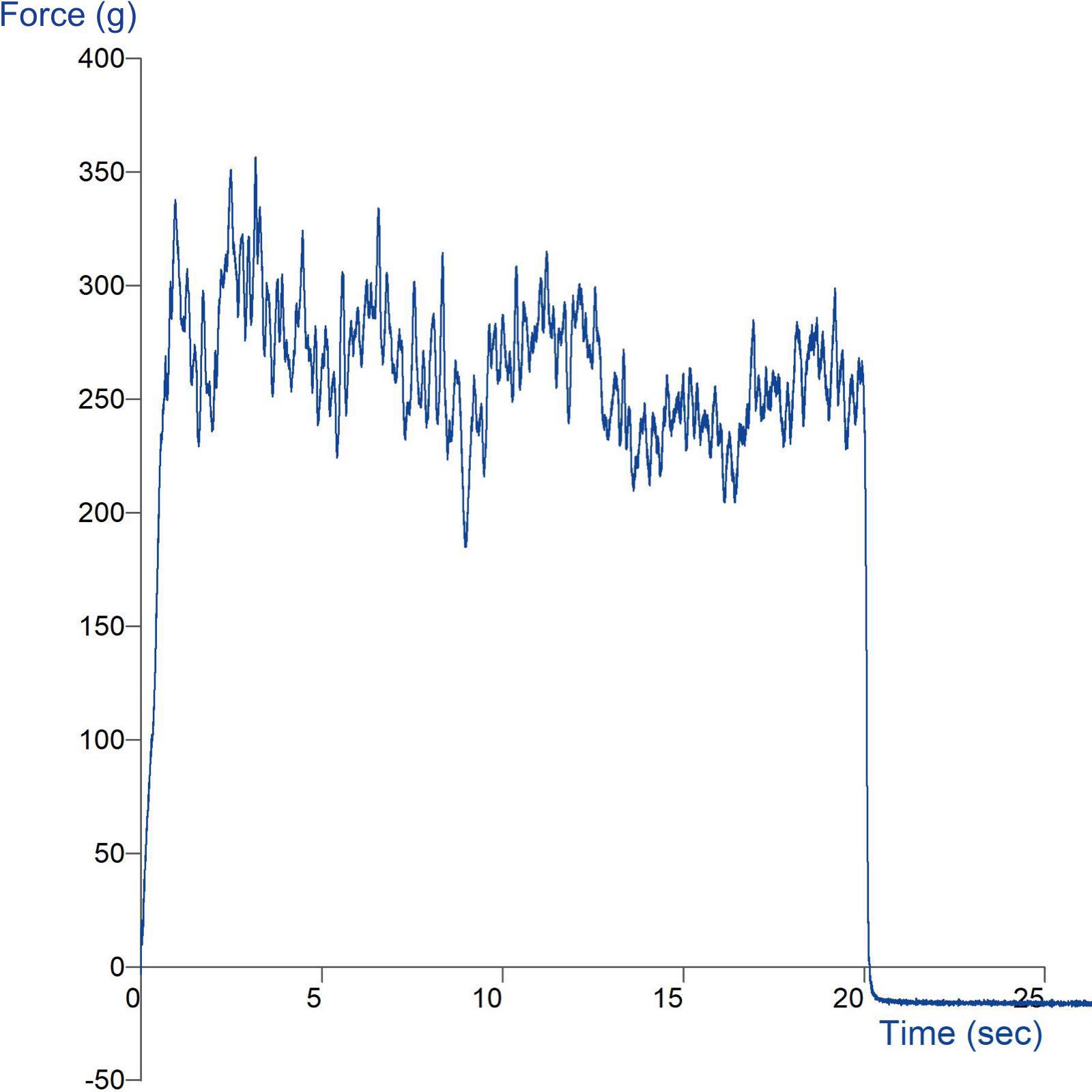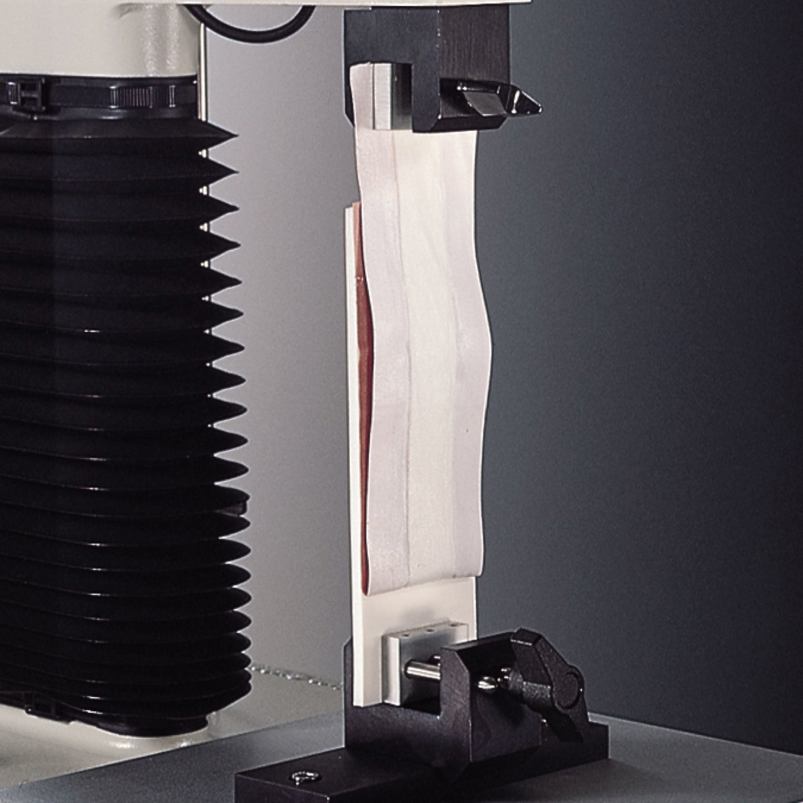Product overview
This test can determine the comparative peeling or stripping characteristics of adhesive bonds, essential for the application of any type of tape or medical adhesive bandages. Wound dressings and adhesive strips are required to have qualities such as 'low-tack', water- or moisture-resistance; not only is the selection of the strip material and surface important, but also the properties of the adhesive.
Skin adhesion and drug compatibility are critical performance characteristics of a transdermal system, for example. Because drug delivery is directly proportional to the skin contact area, it may be compromised if a patch does not maintain proper skin adhesion. Assigning objective values to adhesive characteristics can predict the effectiveness of transdermal patches.
How does the 180° Peel Rig work?
Typical graph

Technical information
Ideal sample form
A flexible material which can be adhered to a chosen surface and gripped at one end in order to be pulled back and pulled off the surface through 180 degrees.
Benefits and limitations
- Peeling speed is controlled whilst 180 degree peeling maintained.
- Limited by the plate size and instrument pulling distance along with width and length of the material to be peeled.
- In order to measure the force to peel a sample from the plate, the force to apply the sample should be consistent.
Installation
Full installation instructions are provided within the Education Zone of the latest Exponent/Connect software version and on the technical information sheet accompanying this product.
Chemical compatibility
Stable Micro Systems probes and attachments are commonly made from four materials: anodised aluminium (AA6082 T6), stainless steel (316 T), Delrin (acetyl copolymer) and Perspex (polycarbonate).
In general use, probes and attachments made from these materials will be suitable for testing food products and inert non-food materials.
The four materials listed above are not universally resistant to all types of chemicals and as such the compatibility of the probe/attachment material with the product (to be tested) must be established to prevent damage to the probes and attachments. If the compatibility of the product with the probe is unknown to the customer then the chemical information about the product (Material Safety Data Sheet or Product Data Sheet) should be submitted to Stable Micro Systems. Stable Micro Systems will then assess the suitability of the probe/attachment material for use with the product and advise accordingly. If this advice is not sought then Stable Micro Systems will not accept liability for probes/attachments damaged by chemical attack from the product being tested.
Cleaning and maintenance
All probes and attachments may be cleaned in warm (or hand hot) water using a mild detergent. A soft brush may be used but abrasive cleaning aids should be avoided. Stable Micro Systems products should not be microwaved or cleaned in a dishwasher.
Screw threads should be lightly lubricated after drying using a light lubricant, e.g. petroleum jelly, mineral oil. This will aid the fitting and unscrewing of the item. Each component of a probe or attachment should be wrapped separately when stored, to avoid scratching or chipping. This will safeguard against any unnecessary damage to the accessory.


